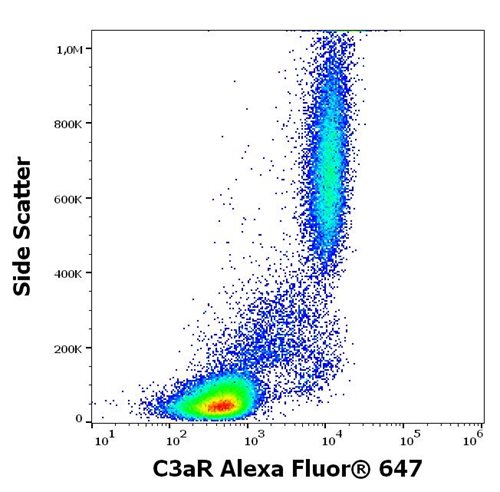Recombinant Cynomolgus BTN3A1 Protein, His Tag
Shipping Info:
For estimated delivery dates, please contact us at [email protected]
| Amount : | 50 µg |
| Content : | Lyophilized from sterile PBS, pH 7.4. Normally 5 % - 8% trehalose is added as protectants before lyophilization. |
| Storage condition : | Store at -20°C to -80°C for 12 months in lyophilized form. After reconstitution, if not intended for use within a month, aliquot and store at -80°C (Avoid repeated freezing and thawing). Lyophilized proteins are shipped at ambient temperature. |
| Uniprot ID : | A0A330KVC6 |
| Alternative Name : | Butyrophilin protein |
Molecular Characterization: BTN3A1(Gln1-Ser218) 6×His tag
Molecular weight: The protein has a predicted molecular mass of 24.3 kDa after removal of the signal peptide. The apparent molecular mass of cBTN3A1-His is approximately 25-35 kDa due to glycosylation.
Description: Recombinant Cynomolgus BTN3A1 protein with C-terminal 6×His tag
Butyrophilin subfamily 3 member A1 (BTN3A1) is also known as CD277 and BTF5, which belongs to the immunoglobulin superfamily and contains one B30.2/SPRY domain and two Ig-like V-type (immunoglobulin-like) domains. BTN3A1 plays a role in T-cell activation and in the adaptive immune response. Also, BTN3A1 regulates the proliferation of activated T-cells and the release of cytokines and IFNG by activated T-cells. Furthermore, BTN3A1 mediates the response of T-cells toward infected and transformed cells that are characterized by high levels of phosphorylated metabolites, such as isopentenyl pyrophosphate.
Molecular weight: The protein has a predicted molecular mass of 24.3 kDa after removal of the signal peptide. The apparent molecular mass of cBTN3A1-His is approximately 25-35 kDa due to glycosylation.
Description: Recombinant Cynomolgus BTN3A1 protein with C-terminal 6×His tag
Butyrophilin subfamily 3 member A1 (BTN3A1) is also known as CD277 and BTF5, which belongs to the immunoglobulin superfamily and contains one B30.2/SPRY domain and two Ig-like V-type (immunoglobulin-like) domains. BTN3A1 plays a role in T-cell activation and in the adaptive immune response. Also, BTN3A1 regulates the proliferation of activated T-cells and the release of cytokines and IFNG by activated T-cells. Furthermore, BTN3A1 mediates the response of T-cells toward infected and transformed cells that are characterized by high levels of phosphorylated metabolites, such as isopentenyl pyrophosphate.
|
There are currently no product reviews
|


















.png)









